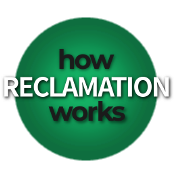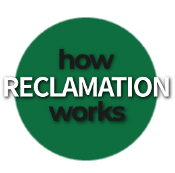- Why Mining Matters
- Jobs
- Safety
- Environment & Operations
- FAQ
- Links
- Fun Stuff
You are here

Thomas J. Brown
BESCO’s Pension
Dan McIsaac and Jim Taylor
Tius Tutty
Wilson Beaton
Aerotech Connector
Henry Swift
1885 Vale Tour
Douglas Slope Explosion
John Angus MacNeil and WWI
Florence Colliery
Joseph Walton
James Lennon
James Hamilton
1918 Allan Mine Disaster
Robert Boutilier’s Luck
Springhill’s John Anderson
Plight of Youth in 1931
Miners’ Wives Praised
Dominion No. 1B in 1931
Allan Shaft, 1931
Private Maceachern
Husseys Prospectus
William Routledge
Swell Factor in Reclamation
Gowrie Mine
River Hebert
Joggins 1904 Fire
Port Hood 1911 Flood
Lamp Cabin Memorial Park
Drummond 1873 Disaster
1872 Accidents
Springhill’s Novaco Mine
1860's Accident
New Glasgow's Linacy Mine
1913 Drummond Fires
1908 Princess Fire
Albion Mines 1913 Fire
DOSCO Miner
Cape Breton's TNT
The McCormick and Turner families
Payday Drunk
John Croak’s Victoria Cross
Atlantic Slag Company
Sydney Cement Company
1914 Coal Mine Cost
Dominion No 2
Canary in a Coal Mine
Draegermen
James Dinn
Pit Ponies
Henry Wadsworth Longfellow
1877 Accidents
Allan Shaft 1912
William Fleming
The Story of Peat
T. G. MacKenzie
Trenton Steel
1930 Stats
MacGregor Mine Explosion
MacGregor Flood
Torbanite Products Limited
Abraham Gesner and Kerosene
1860 Prince of Wales Visit
Dominion No 5
The Royal William and Stellarton Coal
Tom Pit
Terminal City
1875 Accidents
Cannons in Coal Mines
Princess Mine Explosion
Dominion No. 26
A Tale of Two Mines
Franklin Colliery
Robert J. Grant
Springhill No. 1
Mother Coo
Submarine Mines
Barrachois Mine
Fundy Coal Seam
Dominion #14
Dominion #12
Dominion No 4
Child Labour
Joggins Colliery
Safety
Bootleggers
Richmond County
Mabou Mines
Stellar Coal
English Slope
Maccan/Jubilee
The Foster Pit Fire and the Poop Solution
Thomas Edison and the Chignecto coal mine
Henry Whitney and the Dominion Coal Company
Foord Pit
Hiawatha Coal Mine
Coalburn
Springhill Disasters
St. Rose-Chimney Coalfield
Stellarton, Dorrington Softball Complex
How Does Coal Form?
Drummond Coal Mine
Sydney Coalfield and the Princess Mine
Port Morien, 1720
Port Hood
General Mining Association
Thorburn
WWII and Nova Scotia Coal
Nova Scotia's First Railway
Samuel Cunard
Stellarton’s Mining Connections
Sydney Mines
Point Aconi
Victoria Mines
Sullivan Creek
New Campbellton
Inverness and Cabot Links
The Ghost Town of Broughton
Tobin Road, Sydney Mines
Flint Island Coal Mine?!
What does Colliery mean?
Cottam Settlement
Allan Mine
James Lennon
A puzzling decision by the Workers Compensation Board left James Lennon’s widow and children without the pension they were owed after his death in 1926.
Lennon was a chute-loader in Stellarton’s Allan Shaft coal mine, meaning he operated a chute that loaded coal into cars (aka boxes or tubs) on rails that carried the coal out of the mine. Chutes had doors/gates on them that the operator used to control the flow of the coal.
On Saturday, February 27, 1926, a tragic accident took Lennon’s life. Because he was alone at the time, there were no witnesses, but what happened seemed obvious. The Evening Mail described it his way: “The unfortunate man was caught in the flow of coal while working around one of the coal chutes. His body was found partly buried in a heap of coal.”
The newspaper suggested he had met “instant death,” crushed by the coal as it fell on him.
The Department of Mines’ annual report for that year recorded the cause of death as a “fall of stone.” That phrase was usually used to describe rock falling from the roof (ceiling) of a mine, but in this case the “fall” was coal flowing uncontrolled through the chute and hitting Lennon.
The Evening Mail’s March 1 edition said, “The deceased was a man of excellent reputation and he was a skilled miner. He was for many years a resident of Stellarton, residing on Coxen Row. He is survived by his widow, three sons, and three daughters.”
The newspaper devoted just three short paragraphs to describing the sad but not unusual workplace accident.
But then, something unusual happened.
Investigations were usually held within days of fatalities in mines to gather evidence and determine what had happened. Government regulators could require changes to rules, equipment or practices to try to prevent a similar accident happening again, and the investigations were an important of the process of making mines safer.
In this case, the investigation concluded that Lennon’s death was just an unfortunate accident. Lennon’s fellow miners and the Department of Mines’ deputy inspector agreed.
However, the Workers Compensation Board (WCB) disagreed. It conducted its own investigation and concluded that Lennon had died of natural causes. This meant his widow and children would not receive a WCB pension since, in the WCB’s opinion, Lennon had not died as a result of his job.
Over one year later, in April 1927, the unusual dispute was in the hands of Judge Allan McDonald. He was tasked by the Minister of Mines and local MLAs with determining the cause of Lennon’s death and whether his widow was owed a pension.
The issue mattered because, as the Evening Mail put it, “Mrs. Lennon, widow of the dead miner, is said to be without means whereby to support a family of eight children.” (Newspaper reports differed on the number of Lennon children.)
Judge McDonald wasted no time. He started his investigation around April 7 and by April 12 the Evening Mail reported that he had forwarded a report to the provincial government: “it is understood that Judge McDonald states that the opinion that Lennon came to his death from natural causes can be nothing but surmise.” In other words, the Workers Compensation Board had no evidence that countered the obvious conclusion that a man partly buried in fallen coal was killed by the coal.
The newspaper said Lennon had been working on the 670-foot level of the mine: “The chute at which Lennon was working inclined from the car at an angle of about 20 degrees. About 400 pounds of coal had been sent down the chute when it was found that the door which was worked by Lennon had not been operated. Upon investigation it was found that Lennon was lying dead with the chute door partly under him.”
The chute’s door had apparently either broken or Lennon had made a mistake, and the coal flowed down unimpeded, killing him.
We could find no records to confirm it, but it seems all but certain that Judge McDonald’s report would have resulted in Mrs. Lennon receiving the pension she and her children so desperately needed.
Historical accidents are partly why Nova Scotia’s mining and quarrying industry is so safety-focussed today. The industry has reduced its injury rate by 90% since the Westray inquiry report was released in 1997.
We tell the stories of accidents in historical mines to honour those miners, and to highlight how different the mining industry is now. Today, we believe the most important thing to come out of a mine is the miner, and our modern safety record reflects this.
Today the Allan Shaft is the site of Sobeys’ headquarters, an example of how former mines and quarries go on to serve communities other ways after extraction is done.

















































































